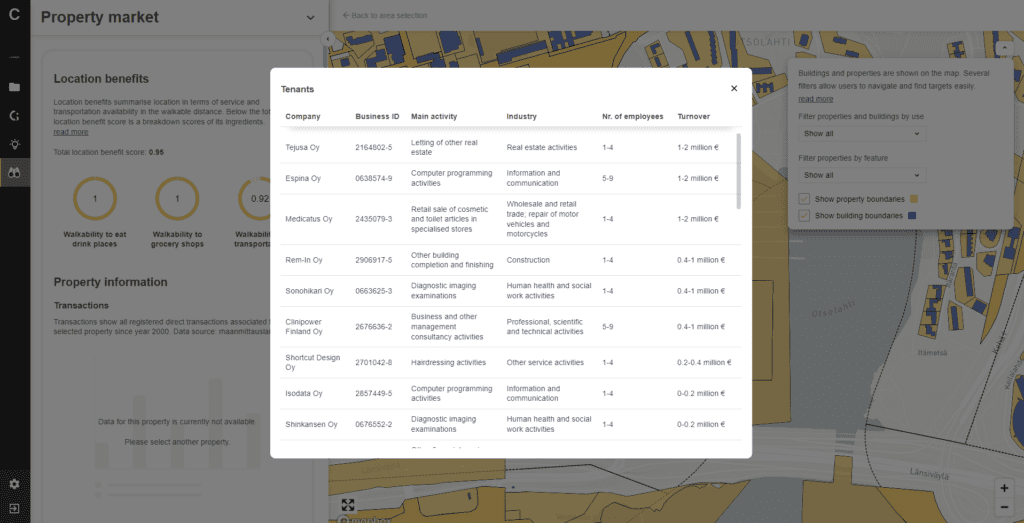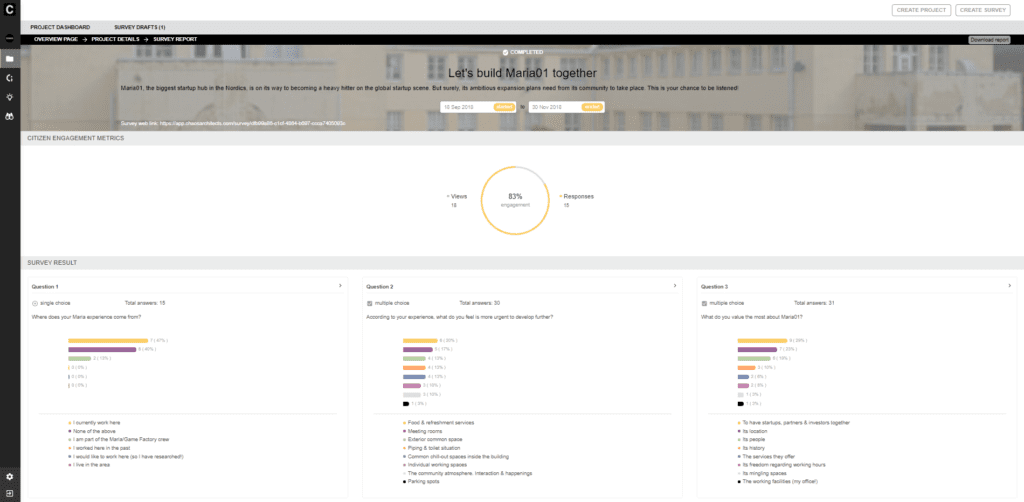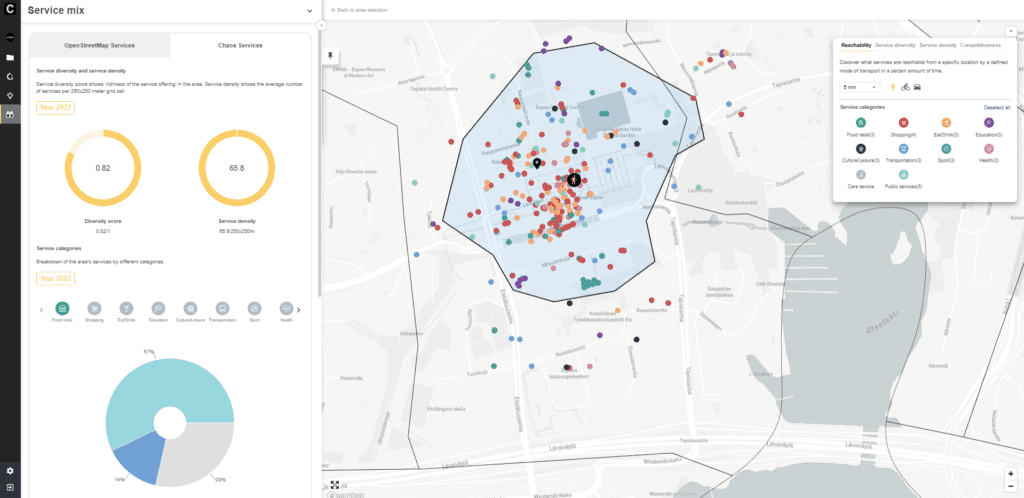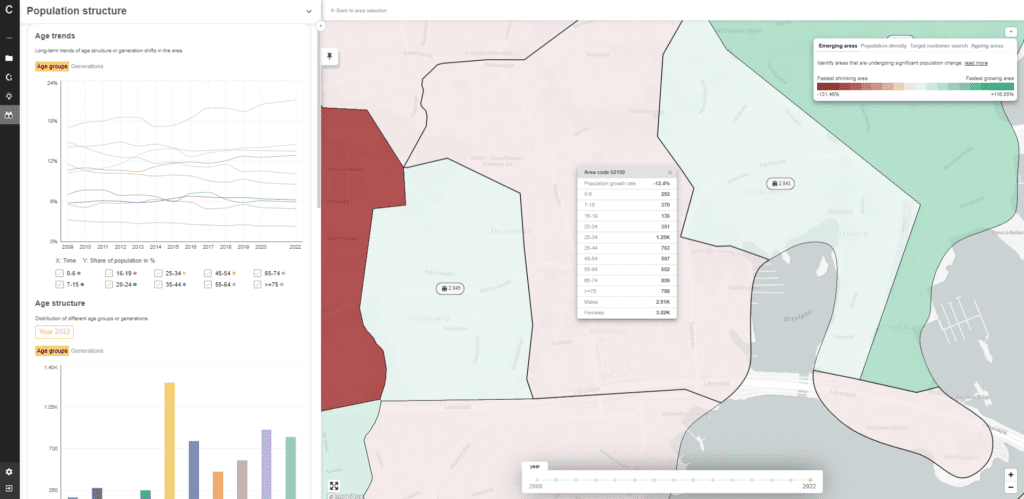

Human-centered real estate: Stay in the industry trend with CHAOS solutions
In a recent edition of McKinsey’s new series “The Next Normal”, leading executives and McKinsey experts discuss the future of the real estate industry. While
What should be considered when investing in real estate? How to become a pioneer, developer and inventor? How to stay ahead of the game and create permanent, sustainable and user-oriented investments that guarantee a stable cash flow? Data and technological tools can be harnessed to solve this equation.
Investing in real estate has been gaining popularity in the past few years. New funds and investors have entered the industry and there has also been foreign interest despite covid. This is unsurprising, since real estate has offered a good return on risk – especially if with decentralized investments.
In the recent years, credit has been inexpensive and interest caps have been inexpensive protection against rising interest rates. If one has been able to invest reasonably in various areas, required rate returns (RRR) have gone down while prices have gone up. No wonder real estate investing has become the hype.
If you compare apartments (residential) and business (commercial) premises as an investment target, the business premises typically have longer lease terms and higher return targets. Of course, the effects of the Covid have brought their own spice into the game. A comprehensive understanding and data on the current state and development of different regions support investors in decision-making. Using data enables decision-making based on facts.
Competition in the industry is fierce. The diversity of actors on the real estate industry forces us to always come up with something new – to be a pioneer, to develop and to come up with ideas. Good location has always been paramount, but you also need to consider megatrends as well as a slew of other factors that contribute to success.
How can this be achieved and what does it require? Well, background information, data on the area, demographics of the area, price levels, services, plots, real estate, construction and development projects and so on! All this information helps to gain a comprehensive understanding of the area, its potential, and latent needs, which contributes to a more efficient planning process. Plus you always need a touch of imagination!
A comprehensive understanding and data on the current state and development of different regions support investors in decision-making. Using data enables decision-making based on facts.
When it comes to responsibility and sustainable development, we must bare in mind that the carbon footprint of the built environment is enormous. Therefore we should always evaluate whether to build new or develop old. The existing building stock is the most sustainable, especially if it can be developed or utilised to meet the needs of the future.
Sustainable development takes into account buildings, building materials and people. While developing sustainably we ask questions, such as where do employees live: what would be the best location for the office to keep the commute as short as possible and minimise organisation’s carbon footprint? What sector of jobs there are currently in the area? What kind of companies can be found in the neighborhood?
Below (fig. 1) is an example from the Espoo area – the first picture shows office jobs and the following shows companies from a specific property in Tapiola.




Roughly speaking, the value of a property consists of its ability to generate cash flow in the future as well as the residual value of the property. The residual value should be briskly positive, therefore satisfied tenants and long lease terms are paramount to the value of the property. The Covid has had a significant impact on business premises and offices, and quality seems to be replacing the quantity in square meters.
The role of offices is changing. They are becoming a space for learning, project working and spending time with colleagues. These functions set new requirements for offices. They are no longer spaces for working alone, meetings or making calls. This also brings a new challenge to property owners. How to respond the changinf need for these premises and the different elements of flexibility is lease contracts?
One way to map needs is to collect feedback, ideas, and wishes. This way, tenants and users of these spaces can be understood and the end result can better meet their needs. This process is called co-creation or co-development: a goal-oriented collaboration with the end user or other stakeholders.
There are many tools on the markets for co-creation. For example, CHAOS offers a great, easy-to-use tool for surveys. This tool enables gathering ideas and engaging tenants into the design process (Figure 3).


Surveys can also be implemented using the free CHAOS Crowd application. Similarily as with the surveys, the the results are open, which enables both the collection of feedback and its further utilization for mapping and planning the needs of the area, as well as for general ideation (fig. 4). We have previously wrote about the importance of engagement and co-creation. Read more about it here.


From the perspective of the owner of a commercial property, it is good to think especially about tenants and services in the area.
For example
Profitable investments require previous knowledge about the available services in the area. This information allows developing properties to better fit the area’s needs and increase the value and attractiveness of the area and the property.




In the beginning, we stated that a holistic understanding of the current state and development of different regions supports the investor in decision-making. That holistic understanding includes a myriad of different elements that can be explored very deeply, or as resources allow. Often, however, this is not possible. Instead, we need a comprehensive overview – a sufficient understanding on which to base decisions. Good tools and data are the key.
After all, real estate investment, construction and development are about people – the users of the building. High utilization rates indicate success and guarantee a stable cash flow for the investor. Responsible property owners are investing in sustainable solutions, which, according to research, create the basis for longer leases and satisfied tenants.
A small scratch on the surface will hopefully increase your appetite – we will write more about this in the near future!


In a recent edition of McKinsey’s new series “The Next Normal”, leading executives and McKinsey experts discuss the future of the real estate industry. While



CHAOS’ AI-based urban forecasts and data screening help noste.io promote a more sustainable real estate business and create value for its customers.


For too long the real estate industry has taken investment decisions on a case-by-case basis; based on segregated information and personal networking, which is usually
What should be considered when investing in real estate? How to become a pioneer, developer and inventor? How to stay ahead of the game and create permanent, sustainable and user-oriented investments that guarantee a stable cash flow? Data and technological tools can be harnessed to solve this equation.
Investing in real estate has been gaining popularity in the past few years. New funds and investors have entered the industry and there has also been foreign interest despite covid. This is unsurprising, since real estate has offered a good return on risk – especially if with decentralized investments.
In the recent years, credit has been inexpensive and interest caps have been inexpensive protection against rising interest rates. If one has been able to invest reasonably in various areas, required rate returns (RRR) have gone down while prices have gone up. No wonder real estate investing has become the hype.
If you compare apartments (residential) and business (commercial) premises as an investment target, the business premises typically have longer lease terms and higher return targets. Of course, the effects of the Covid have brought their own spice into the game. A comprehensive understanding and data on the current state and development of different regions support investors in decision-making. Using data enables decision-making based on facts.
Competition in the industry is fierce. The diversity of actors on the real estate industry forces us to always come up with something new – to be a pioneer, to develop and to come up with ideas. Good location has always been paramount, but you also need to consider megatrends as well as a slew of other factors that contribute to success.
How can this be achieved and what does it require? Well, background information, data on the area, demographics of the area, price levels, services, plots, real estate, construction and development projects and so on! All this information helps to gain a comprehensive understanding of the area, its potential, and latent needs, which contributes to a more efficient planning process. Plus you always need a touch of imagination!
A comprehensive understanding and data on the current state and development of different regions support investors in decision-making. Using data enables decision-making based on facts.
When it comes to responsibility and sustainable development, we must bare in mind that the carbon footprint of the built environment is enormous. Therefore we should always evaluate whether to build new or develop old. The existing building stock is the most sustainable, especially if it can be developed or utilised to meet the needs of the future.
Sustainable development takes into account buildings, building materials and people. While developing sustainably we ask questions, such as where do employees live: what would be the best location for the office to keep the commute as short as possible and minimise organisation’s carbon footprint? What sector of jobs there are currently in the area? What kind of companies can be found in the neighborhood?
Below (fig. 1) is an example from the Espoo area – the first picture shows office jobs and the following shows companies from a specific property in Tapiola.
Roughly speaking, the value of a property consists of its ability to generate cash flow in the future as well as the residual value of the property. The residual value should be briskly positive, therefore satisfied tenants and long lease terms are paramount to the value of the property. The Covid has had a significant impact on business premises and offices, and quality seems to be replacing the quantity in square meters.
The role of offices is changing. They are becoming a space for learning, project working and spending time with colleagues. These functions set new requirements for offices. They are no longer spaces for working alone, meetings or making calls. This also brings a new challenge to property owners. How to respond the changinf need for these premises and the different elements of flexibility is lease contracts?
One way to map needs is to collect feedback, ideas, and wishes. This way, tenants and users of these spaces can be understood and the end result can better meet their needs. This process is called co-creation or co-development: a goal-oriented collaboration with the end user or other stakeholders.
There are many tools on the markets for co-creation. For example, CHAOS offers a great, easy-to-use tool for surveys. This tool enables gathering ideas and engaging tenants into the design process (Figure 3).
Surveys can also be implemented using the free CHAOS Crowd application. Similarily as with the surveys, the the results are open, which enables both the collection of feedback and its further utilization for mapping and planning the needs of the area, as well as for general ideation (fig. 4). We have previously wrote about the importance of engagement and co-creation. Read more about it here.
From the perspective of the owner of a commercial property, it is good to think especially about tenants and services in the area.
For example
Profitable investments require previous knowledge about the available services in the area. This information allows developing properties to better fit the area’s needs and increase the value and attractiveness of the area and the property.
In the beginning, we stated that a holistic understanding of the current state and development of different regions supports the investor in decision-making. That holistic understanding includes a myriad of different elements that can be explored very deeply, or as resources allow. Often, however, this is not possible. Instead, we need a comprehensive overview – a sufficient understanding on which to base decisions. Good tools and data are the key.
After all, real estate investment, construction and development are about people – the users of the building. High utilization rates indicate success and guarantee a stable cash flow for the investor. Responsible property owners are investing in sustainable solutions, which, according to research, create the basis for longer leases and satisfied tenants.
A small scratch on the surface will hopefully increase your appetite – we will write more about this in the near future!


Terhi Palosaari is a Sales Manager and part of the sparkly sales team.
She's enthusiastic to learn new things and finding solutions to develop processes. Terhi wants to understand better customers' needs and help to make things and processes more simple and easier - and of course based on data and knowledge! She has a background in different roles in sales, housing and software companies.
Her free time is full of nice things, hobbies, and duties related to her family and children. She does volunteer work every week. Outdoor activities with the family and gardening are her therapy.


Multiple survey results and reports published during recent years indicate that the majority of executives in the RE industry now believe that harnessing the potential of big data and AI offers a huge competitive advantage But how far are we in the transformation process? Has the industry unlocked the full potential of data, advanced analytics, and AI?


A while ago, attention was drawn to Pakila when Helsingin Sanomat published an intriguing article. Encouraged by this, we decided to take a closer look at Pakila to better understand why real estate investors are showing interest in the area.



CHAOS’ AI-based urban forecasts and data screening help noste.io promote a more sustainable real estate business and create value for its customers.